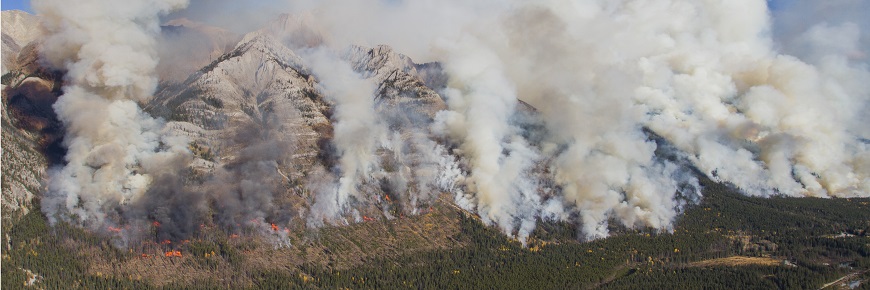
Draft Banff, Kootenay and Yoho National Park fire management plan executive summary
Banff National Park
The plan is a blueprint for fire protection and fire restoration within Banff, Kootenay and Yoho national parks. It integrates policy, strategic direction, and field-level actions to achieve positive outcomes for the environment and for people. It is founded upon principles of long term sustainability, co-ordinated internal delivery, and a nationally consistent approach to fire management. In addition to the national parks, the plan covers the Cave and Basin, Rocky Mountain House and Kootenae House national historic sites as well as the Ya Ha Tinda Ranch.
Management actions are guided by clear strategic guidance, thorough consultation, and established performance measures with a focus on science-based decision making. Preparation of this plan has involved consultation with managers within the Parks Canada Agency, Indigenous Peoples, stakeholders and adjacent land managers regarding shared opportunities and challenges, and mutually beneficial approaches to managing and using fire at a landscape level.
The first Banff Fire Management Plan (White, 1984) set the stage for progressive, science-based fire management to offset the negative impacts of fire exclusion on Parks Canada lands in the mountain parks. More than three decades later, monitoring and research have determined that focused intervention is required to: 1) protect the public and infrastructure as necessary; 2) allow wildfire to fulfill its ecological role with minimal interference wherever possible; and 3) conduct prescribed fires to offset the detrimental effects of fire suppression.
The primary goal of protecting public and infrastructure from the negative effects of wildfire are addressed in this plan through clearly defined resourcing levels, preparedness guidelines, and strategic fire zoning. Furthermore, fuel management implementation guidelines are focused on maintaining or improving existing fuel management units and creating landscape level fuel breaks to assist in safe implementation of prescribed fire in Banff, Kootenay and Yoho national parks.
Despite restoration efforts over the past 30 years, monitoring indicates that ecosystem health within the parks continues to decline due to previous fire exclusion policies resulting in significant fire cycle deficits. The Parks Canada Agency wildfire zoning approach with a focus on a landscape that is tolerant of as many intermediate and extensive zones as possible is a step towards a more fire resilient landscape.
Fundamental to the success of Parks Canada’s fire program is public acceptance of fire as a process vital to maintaining biological structure, function and diversity. The need to embrace the concept and practice of living with fire while mitigating its impacts is essential to ensuring that the public, property and ecosystems are protected. Accordingly, the plan addresses the public communications, engagement and visitor experience in as key components of delivering the fire program.

Figure 1: Fire Management Zone Map – Banff and LLYK Field Units

Figure 2: Proposed Prescribed Fires from 2019-2027 in Banff National Park.

Figure 3: Proposed Prescribed Fires from 2019-2029 in Yoho National Park.

Figure 4: Proposed Prescribed Fires from 2019-2029 in Kootenay National Park.

Figure 5: Completed and Planned Fuel Management Units around the town of Banff.


Figure 7: Completed and Planned Fuel Management Units around the community of Field.
- Date modified :